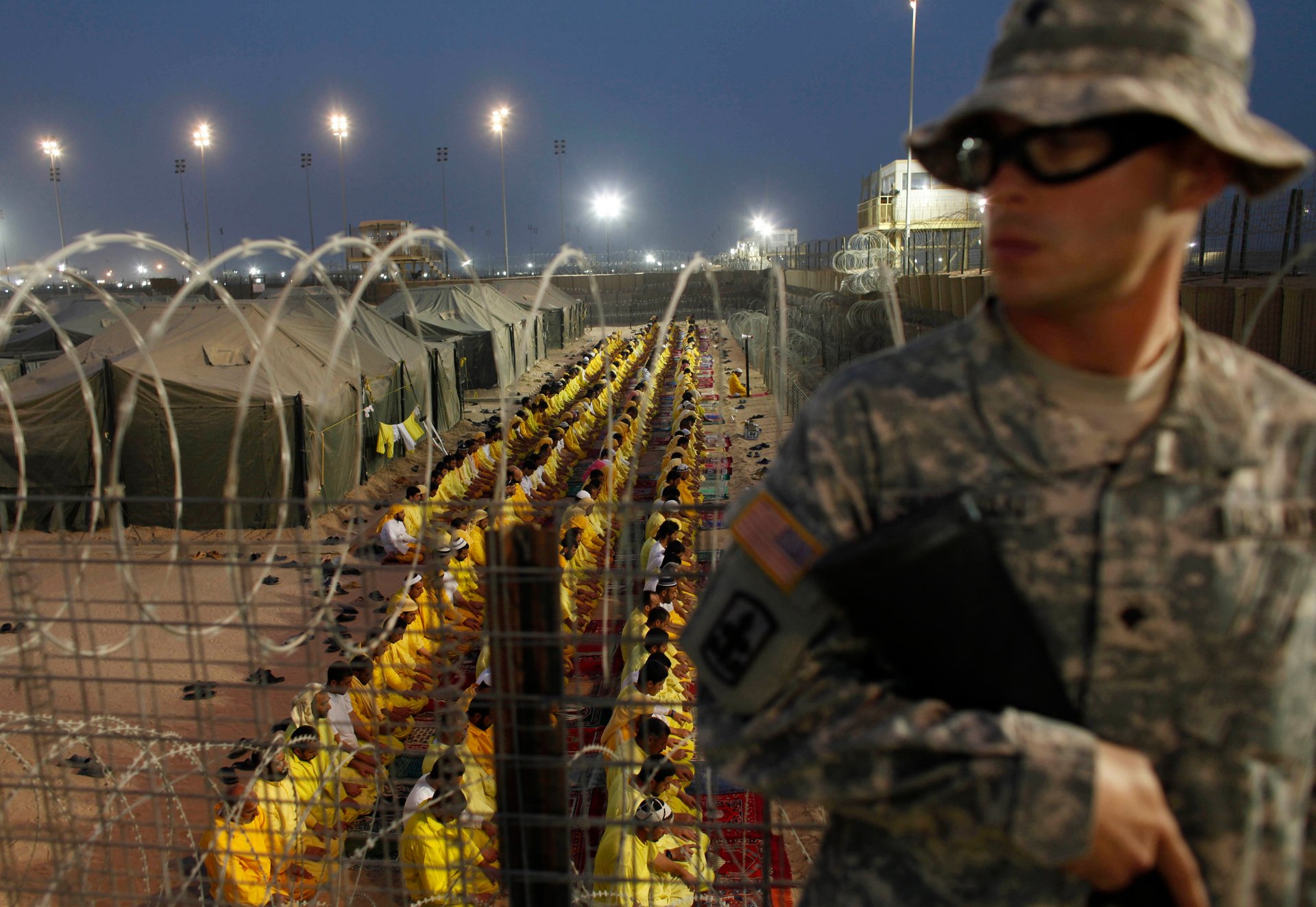A US prison in Iraq—dubbed “Jihadi University”—gave birth to the Islamic State
We know an awful lot about the rise of ISIL, or the Islamic State—including where it got its start.


We know an awful lot about the rise of ISIL, or the Islamic State—including where it got its start.
There are ”many strands of blame,” according to a recent New York Times article (paywall), but an indisputable element is Camp Bucca, an American prison in southern Iraq during the US occupation. It was there that many of the key figures in the group that would succeed al-Qaida in Iraq and go on to form what it calls a caliphate across parts of Iraq and Syria met—including the current leader of the group, Abu Bakr al-Baghdadi.
It was sometimes referred to as “Jihadi University” because of the training provided there. “If you were looking to build an army, prison is the perfect place to do it,” Maj. Gen. Douglas Stone, a prison commander in Iraq, is quoted by the Times as saying. “We gave them health care, dental, fed them, and most importantly, we kept them from being killed in combat.”
Andrew Thompson, a veteran of the US war in Iraq, wrote in 2014 (paywall) that ”the radicalization of the prison population was evident to anyone who paid attention.” Al-Baghdadi and other extremists were imprisoned alongside moderates, many of whom had no history of violence. Thompson wrote:
At Camp Bucca, the extremists forced moderate detainees to listen to clerics who advocated jihad. The majority of prisoners were illiterate, so they were particularly susceptible. Prisoners frequently refused medical attention and vocational training for fear of breaking religious rules. The prisons became virtual terrorist universities: The hardened radicals were the professors, the other detainees were the students, and the prison authorities played the role of absent custodian.
About 100,000 individuals were detained in American-run prisons in Iraq between 2004 and 2011.
Abu Ahmed, a senior official within ISIL, said Camp Bucca was “the perfect environment” for jihadists to learn from each other and scheme for the future in an interview to The Guardian in 2014:
We had so much time to sit and plan. We could never have all got together like this in Baghdad, or anywhere else… It would have been impossibly dangerous. Here, we were not only safe, but we were only a few hundred metres away from the entire al-Qaida leadership.
We all agreed to get together when we got out. The way to reconnect was easy. We wrote each other’s details on the elastic of our boxer shorts. When we got out, we called. Everyone who was important to me was written on white elastic. I had their phone numbers, their villages. By 2009, many of us were back doing what we did before we were caught. But this time we were doing it better.
Another former detainee, Adel Jasim Mohammed, who spoke to al-Jazeera in 2009, said he witnessed inmates “giving courses using classroom boards on how to use explosives, weapons and how to become suicide bombers.” The Americans in charge, he said, “did not stop them.”
Now, ISIL is the biggest terrorist group in the world. As for what happened to Camp Bucca? It has been transformed into a hotel (paywall).